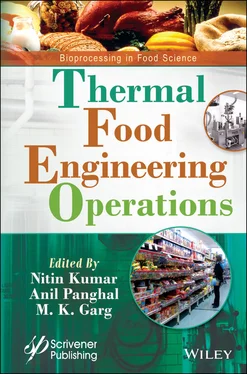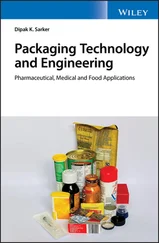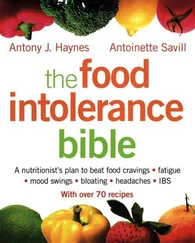NITIN KUMAR - Thermal Food Engineering Operations
Здесь есть возможность читать онлайн «NITIN KUMAR - Thermal Food Engineering Operations» — ознакомительный отрывок электронной книги совершенно бесплатно, а после прочтения отрывка купить полную версию. В некоторых случаях можно слушать аудио, скачать через торрент в формате fb2 и присутствует краткое содержание. Жанр: unrecognised, на английском языке. Описание произведения, (предисловие) а так же отзывы посетителей доступны на портале библиотеки ЛибКат.
- Название:Thermal Food Engineering Operations
- Автор:
- Жанр:
- Год:неизвестен
- ISBN:нет данных
- Рейтинг книги:5 / 5. Голосов: 1
-
Избранное:Добавить в избранное
- Отзывы:
-
Ваша оценка:
- 100
- 1
- 2
- 3
- 4
- 5
Thermal Food Engineering Operations: краткое содержание, описание и аннотация
Предлагаем к чтению аннотацию, описание, краткое содержание или предисловие (зависит от того, что написал сам автор книги «Thermal Food Engineering Operations»). Если вы не нашли необходимую информацию о книге — напишите в комментариях, мы постараемся отыскать её.
Presenting cutting-edge information on new and emerging food engineering processes,
, the first volume in the new series, “Bioprocessing in Food Science,” is an essential reference on the modeling, quality, safety, and technologies associated with food processing operations today.
This outstanding new volume:
Audience:
Thermal Food Engineering Operations — читать онлайн ознакомительный отрывок
Ниже представлен текст книги, разбитый по страницам. Система сохранения места последней прочитанной страницы, позволяет с удобством читать онлайн бесплатно книгу «Thermal Food Engineering Operations», без необходимости каждый раз заново искать на чём Вы остановились. Поставьте закладку, и сможете в любой момент перейти на страницу, на которой закончили чтение.
Интервал:
Закладка:
7 Extraction rate increase: Plant tissues pretreated ohmically at moderate temperatures and maximum efficiency in the extraction of juices by pressing was seen, e.g., increased efficiency of sucrose extraction from sugar beet; improvement in the dispersion of soymilk from soybeans. Ohmically treated products have higher retention value of color and nutrition, lower processing times, and higher extraction yields [34].Other Applications of Ohmic Heating: (Ohmically treated food materials) [21]Peeling and tissue softening of Ohmically treated and cooked Red beet, carrot, golden carrot, radish, turnip, potato, cabbage, apple, etc.Resistance heating improved the folic acid content of apple due to electropermeabilization.Inactivation of enzymes and reduction in textural changes during storage in pineapple observed using resistance heating.Thermal and non-thermal effects of OH in the meat thawing process and beef cuts.Application in producing products (e.g., ham and bologna emulsions, frankfurters, burger patties, etc.) with properties like soft, less cohesive, less elastic, mushier, less resilient, chewier, and good textural products in a short span of time.Improved firmness in pound cakes.Thermal denaturation of Tofu: Better process control observed and increased in apparent breaking strength and young’s modulus.
8 Rapid heating rates in different types of pickles (1-5°C per second), full-cream milk (7-50°C per second), cut pieces of pork and beef; Low heating and conductivity in fruits, margarine, etc. [61].
9 Time reduction in Bread dough proofing to achieve higher expansion because of high heating rates.
10 The heat source for desalination processes and reduction in processing time in ethanol distillation; better process control in ohmic assisted hydrodistillation.
11 Food Package for long-duration space missions and military; producing shelf-stable food products with better process control, e.g., Pulsed OH treated retort pouches for space missions [46].
12 Reduction of PPO in ohmically treated sugarcane juice, the complete deactivation of PPO in apples, in watermelon juice, in grape juice at a particular temperature-time combination.
13 POD inactivation in broccoli, potato, carrot, sugarcane juice, pumpkin, and artichoke heads in shorter duration and retention of nutrients [46].
1.4 Future Perspective of Novel Thermal Technologies
Microwave ovens are the most common heating techniques currently used in everyday life for reheating or preparing new meals. The advantages of the microwave for future application include time saver, volume heating, high product quality, and many others. The combination of the microwave with the conventional, infrared heating system may have the potential to build a completely new cooking system in future perspectives. Despite the high potential, a microwave is less common in industrial applications; maybe the reason behind this is the high energy cost, which can be balanced by the low research budget and quality of products formed.
The future utilization of RF heating is based on the consumer’s food preferences and need. The current increasing demand for hygienic and safe food will continue to increase demand for RF heating. Increasing the demand for pre-packaged food will result in the growth of RF heating technology. IR can be very useful for continuous baking, drying, and surface pasteurization. The utilization and application of IR in food industries are limited; equipment available for these techniques are not fully optimized and need more research and exploration. With the development of science and technology, the IR techniques might evolve and show their full potential. The ohmic heating has the promising way of providing food with produce high-grade value-added, safe, and better shelf-life products.
Ohmic heating can be efficiently utilized to heat high-acid food products, and for quick heating of liquid products. In future applications, ohmic heating technologies can be utilized in blanching, fermentation, evaporation, dehydration, and extraction. The considerable factors to note for future perspective in the future of ohmic heating are technologies are, considering different factors such as residence time, levels of loading, etc. Lack of temperature for locating a hot and cold spot and lack of models account for differences in electrical conductivity between solid and liquid phase, the response of two-phase with change in temperature [75].
1.5 Conclusion
Safety of food and maintaining its quality is the main concern in any heating process. Fulfilling consumer demand and needs is the main concern for any food processing industry. It has been found that ohmic heating is considered to be the most common and green process in food processing industries [50]. Infrared heating is still evolving and widely applied in drying especially low moisture food. Radiofrequency heating is less widespread as compared to other novel thermal heating technologies. Microwave heating is the most flexible and explored technology worldwide. It has a broad range of applications in hybrid systems. Microwave has great capabilities in sterilization and pasteurization. Novel thermal technologies have great potential and applications in producing safe and quality products with great efficiencies. A few drawbacks attached with these technologies are high investment cost and less control over all variables, which may delay its industrial implementation but its technical solutions are continuously evolving and are underway. Novel thermal technologies have many advantages over their drawbacks such as providing quality value-added products, energy-efficient, and environmentally sound, which proves it’s promising and novel as compared to conventional technologies.
References
1. Antonio Vicente and Ines Alexandra Castro. (2007). Novel thermal Processing Technologies. In Advances in Thermal and Non Thermal Food Preservation (pp. 99–130).
2. Aguilar-Reynosa, A., Romani, A., Rodriguez-Jasso, R. M., Aguilar, C. N., Garrote, G., & Ruiz, H. A. (2017). Microwave heating processing as alternative of pretreatment in second-generation biorefinery: An overview. Energy Conversion and Management , 136 , 50-65.
3. Álvarez, A., Fayos-Fernández, J., Monzó-Cabrera, J., Cocero, M. J., & Mato, R. B. (2017). Measurement and correlation of the dielectric properties of a grape pomace extraction media. Effect of temperature and composition. Journal of Food Engineering , 197 , 98-106.
4. Aydogdu, A., Sumnu, G., & Sahin, S. (2015). Effects of microwave-infrared combination drying on quality of eggplants. Food and Bioprocess Technology , 8 (6), 1198-1210.
5. Bal, L. M., Kar, A., Satya, S., & Naik, S. N. (2010). Drying kinetics and effective moisture diffusivity of bamboo shoot slices undergoing microwave drying. International Journal of Food Science & Technology , 45 (11), 2321-2328.
6. Barba, F. J., Zhu, Z., Koubaa, M., Sant’Ana, A. S., & Orlien, V. (2016). Green alternative methods for the extraction of antioxidant bioactive compounds from winery wastes and by- products: A review. Trends in Food Science and Technology , 49 , 96–109. https://doi.org/10.1016/j.tifs.2016.01.006.
7. Bórquez, R., Melo, D., & Saavedra, C. (2015). Microwave–vacuum drying of strawberries with automatic temperature control. Food and Bioprocess Technology , 8 (2), 266-276.
8. Chandrasekaran, S., Ramanathan, S., & Basak, T. (2013). Microwave food processing—A review. Food Research International , 52 (1), 243-261.
9. Choi, Y. S., Hwang, K. E., Jeong, T. J., Kim, Y. B., Jeon, K. H., Kim, E. M., ... & Kim, C.J. (2016). Comparative study on the effects of boiling, steaming, grilling, microwaving and superheated steaming on quality characteristics of marinated chicken steak. Korean Journal for Food Science of Animal Resources , 36 (1), 1.
Читать дальшеИнтервал:
Закладка:
Похожие книги на «Thermal Food Engineering Operations»
Представляем Вашему вниманию похожие книги на «Thermal Food Engineering Operations» списком для выбора. Мы отобрали схожую по названию и смыслу литературу в надежде предоставить читателям больше вариантов отыскать новые, интересные, ещё непрочитанные произведения.
Обсуждение, отзывы о книге «Thermal Food Engineering Operations» и просто собственные мнения читателей. Оставьте ваши комментарии, напишите, что Вы думаете о произведении, его смысле или главных героях. Укажите что конкретно понравилось, а что нет, и почему Вы так считаете.












